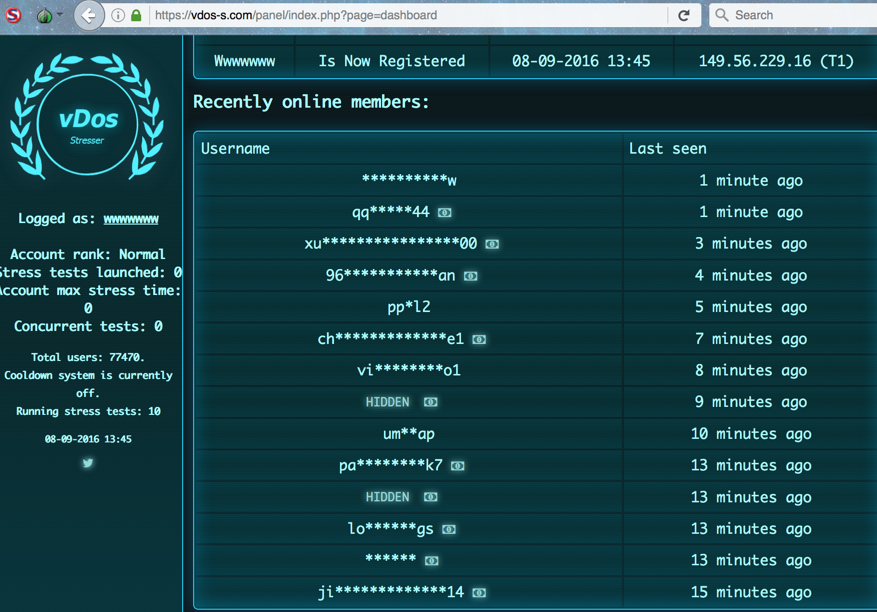

The attack was initiated by a teenager in London.Īn increasing number of perpetrators and groups have shown that they have the ability to launch successful DDoS attacks. In 2013, a 300Gbps attack on Spamhaus was listed as the largest ever. What actually happens when an organization is the victim of a DDoS attack? For starters, it immediately has to divert attention from running crucial operations to getting its website back in working order.Īn increasing number of perpetrators and groups have shown that they have the ability to launch successful DDoS attacks. This process can continue for hours, even days, preventing the user, or any other legitimate users from performing bank transactions.Ī DDoS attack on a web server works similarly, because there is virtually no way to determine traffic from legitimate requests against traffic from attackers until the web server processes the request. However, after this malicious user leaves, another person walks in front of the legitimate user, delaying the legitimate user all over again. Even as a legitimate user of the bank, the user is unable to deposit his check, and is forced to wait until the “malicious” user has finished his conversation. As soon as the user approaches the teller, another person cuts in front the user and begins making small talk with the teller, with no real intention of making any bank-related transactions. Let’s say a user walks in to a bank that only has one teller window open. The logistics of a DDoS attack can be best explained by a figurative example. The goal and end result of a successful DDoS attack is to make the website of the target server unavailable to legitimate traffic requests. A DDoS attack happens when attackers utilize a large network of remote PCs called botnets to overwhelm another system’s connection or processor, causing it to deny service to the legitimate traffic it’s receiving. According to Prince, it was larger even the previous record-holder, a 400Gbps attack in Europe in early 2014.Ī DDoS attack is designed to interrupt or shut down a network, service, or website. Towards the end of 2014, after the Occupy Central protests in Hong Kong, CloudFlare CEO Matthew Prince stated that the largest DDoS attack was done against independent media sites in the province. Previous incidents and trends related to DDoS attacks between 20 revealed that average peak bandwidth had doubled. Moreover, there has been a trend toward greater peak bandwidth, longer attack duration and the use of DDoS as not only a hacktivism tool, but for extortion purposes as well. DDoS attacks escalate in size and impact. Over the past few years, distributed denial-of-service (DDoS) attacks have become a growing security problem for private and public sector organizations. Cybercriminals have the means and the ability to steal information or halt normal system operations with motives ranging from industrial espionage and financial gain to activism and advancing political agendas. The downside of all this convenience, however, is its vulnerability to disruption. The results clearly show that D-FAC has outperformed existing Entropy and divergence based DDoS defense systems on various detection metrics like detection accuracy, classification rate, FPR, precision and F-measure.With over 1 billion users, the Internet has become a conduit for businesses and people to access information, do banking, go shopping, connect with people, and reach out to an audience through social media platforms. D-FAC has been validated in an emulation based DDoSTB testbed using real DDoS attack tools and traffic generators. D-FAC distribute the computational and storage complexity of computing ϕ-Divergence detection metric to the nearest point of presence (PoP) routers.


D-FAC computes the information distance between legitimate and anomalous network traffic flows using information theory-based ϕ-Divergence metric to detect different types of DDoS attacks and efficiently discriminate them from FEs.

This paper proposes an anomaly based distributed defense system called D-FAC that not only detect different type of DDoS attacks with efficacy but also efficiently mitigate their impact. The problem turns further crucial when such attacks are amalgamated with behaviorally similar flash events (FEs) wherein a large number of legitimate users starts accessing a particular service concurrently leading to the denial of service. Despite the presence of enormous DDoS defense solutions, the in-time detection of DDoS attacks poses a stiff challenge to network security professionals. A Distributed Denial of Service (DDoS) attack is an austere menace to extensively used Internet-based services and applications.


 0 kommentar(er)
0 kommentar(er)
